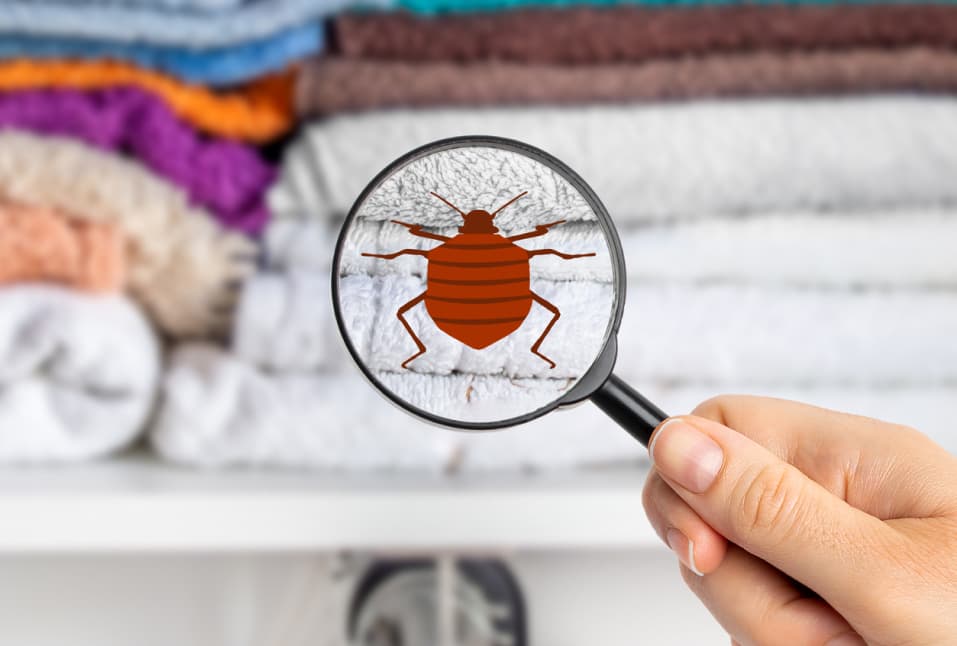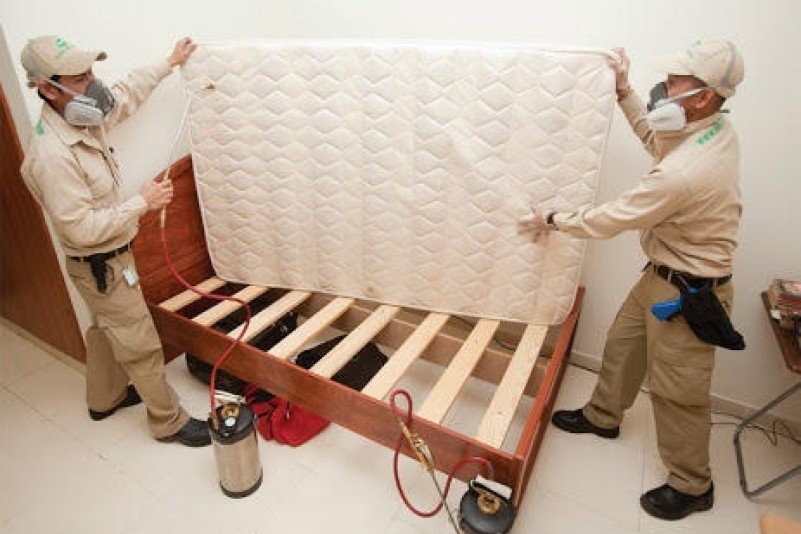Discovering the Science Behind Bed Bug Heat Treatments as a Sustainable Parasite Monitoring Strategy
One such technique that has actually acquired grip in current years is the use of warm treatments to fight bed pest infestations. The details of how warmth properly eliminates bed bugs and the broader ramifications for lasting bug administration techniques make this a subject worth discovering further.
Bed Bug Warm Therapy Refine

Thermal Death Point for Bed Bugs
Exposing bed pests to elevated temperatures beyond their thermal tolerance array is important for accomplishing effective obliteration in heat therapy processes. The thermal death factor for bed pests describes the temperature level at which these bugs can not survive. Study shows that bed insects begin to perish when exposed to temperature levels above 113 ° F(45 ° C) for a sustained duration. As the temperature boosts, so does the death price of bed pests. At around 118 ° F(48 ° C ), bed pests start to pass away quickly, with a mortality rate of virtually 99% within minutes of exposure. This shows the sensitivity of bed bugs to high temperature levels and highlights the effectiveness of warmth therapies in eradicating infestations. By reaching and preserving temperature levels over the thermal death factor for bed insects, bug monitoring experts can make sure comprehensive removal of bed insect populaces, consisting of hard-to-reach areas where chemical treatments might be much less efficient. Comprehending the thermal fatality factor for bed pests is vital for applying effective warmth treatment strategies and accomplishing sustainable pest management end results.
Advantages of Warmth Treatments
Having actually established the essential thermal death point for bed insects, it is important to now check out the considerable advantages that heat treatments supply in successfully eradicating these resistant insects. One of the primary benefits is that warm can pass through deep into crevices and splits where bed pests conceal, making sure that even the most hard-to-reach locations are heated to lethal temperatures.
In addition, warmth therapies are eco pleasant and non-toxic, making them a lasting bug management strategy. Unlike chemical pesticides, warm therapies do not leave unsafe deposits that can posture dangers to human health and wellness or the environment. This facet is especially crucial in delicate environments such as hospitals, schools, and houses where chemical use may not be desirable.
Additionally, bed bug heat treatment warmth therapies have a high success rate in getting rid of bed bug invasions in a solitary therapy, reducing the demand for several gos to and minimizing interruption to occupants. This effectiveness not only conserves money and time however also gives assurance to those taking care of bed bug issues.
Performance of Warm Therapy

Research study research studies have actually constantly shown the efficiency of heat therapies in accomplishing a high rate of bed bug mortality. Appropriately performed heat therapies can get to all the splits and crevices where bed bugs might be nurturing, ensuring an extensive method to extermination. Moreover, warm therapies have actually the added advantage of eliminating bed insect eggs, which are frequently immune to conventional chemical treatments. Generally, the effectiveness of warm therapies in eradicating bed pest problems makes them a dependable and lasting pest monitoring approach.
Lasting Insect Management Benefits
Implementing sustainable parasite monitoring methods supplies lasting advantages for both the atmosphere and public health. By making use of approaches such as warm treatments for parasite control, we can minimize the dependence on hazardous chemical pesticides that can have adverse results on ecological communities and human health and wellness - exterminator near me. Sustainable parasite administration strategies aid in protecting biodiversity by targeting specific bugs without harming non-target microorganisms, thus maintaining a well balanced ecosystem
In addition, sustainable parasite administration techniques add to the why not try this out total health and wellness and health of the public. By decreasing exposure to poisonous chemicals used in typical bug control methods, warm therapies offer a more secure alternative for bug management in domestic, business, and public spaces. This reduction in chemical use also assists in protecting against pesticide deposits from infecting soil, water, and air, guarding environmental high quality.
Verdict
Finally, bed insect warmth therapies have been revealed to be a lasting and reliable parasite management technique. The thermal fatality factor for bed bugs makes them prone to warmth therapies, which have various advantages over traditional chemical treatments. The efficiency of warm therapies in removing bed pest problems while minimizing environmental effect highlights the capacity of this technique as a lasting option for parasite control.
The bed pest warmth therapy procedure entails raising the temperature within infested areas to a degree that effectively eliminates bed bugs and their eggs. By getting to and keeping temperature levels over the thermal fatality factor for bed insects, bug administration experts can guarantee extensive elimination of bed bug populaces, consisting of hard-to-reach locations where chemical therapies might be less effective. One of the primary benefits is that warm can permeate deep into holes and splits where bed pests conceal, making sure that even the most hard-to-reach areas are warmed to deadly temperatures. Unlike chemical treatments that might leave behind useful site resistant populations, warmth therapies provide a non-toxic and eco pleasant service that can penetrate deep right into furniture, walls, and various other hard-to-reach areas where bed bugs conceal.
The thermal death factor for bed insects makes them vulnerable to warmth therapies, which have various benefits over standard chemical treatments.